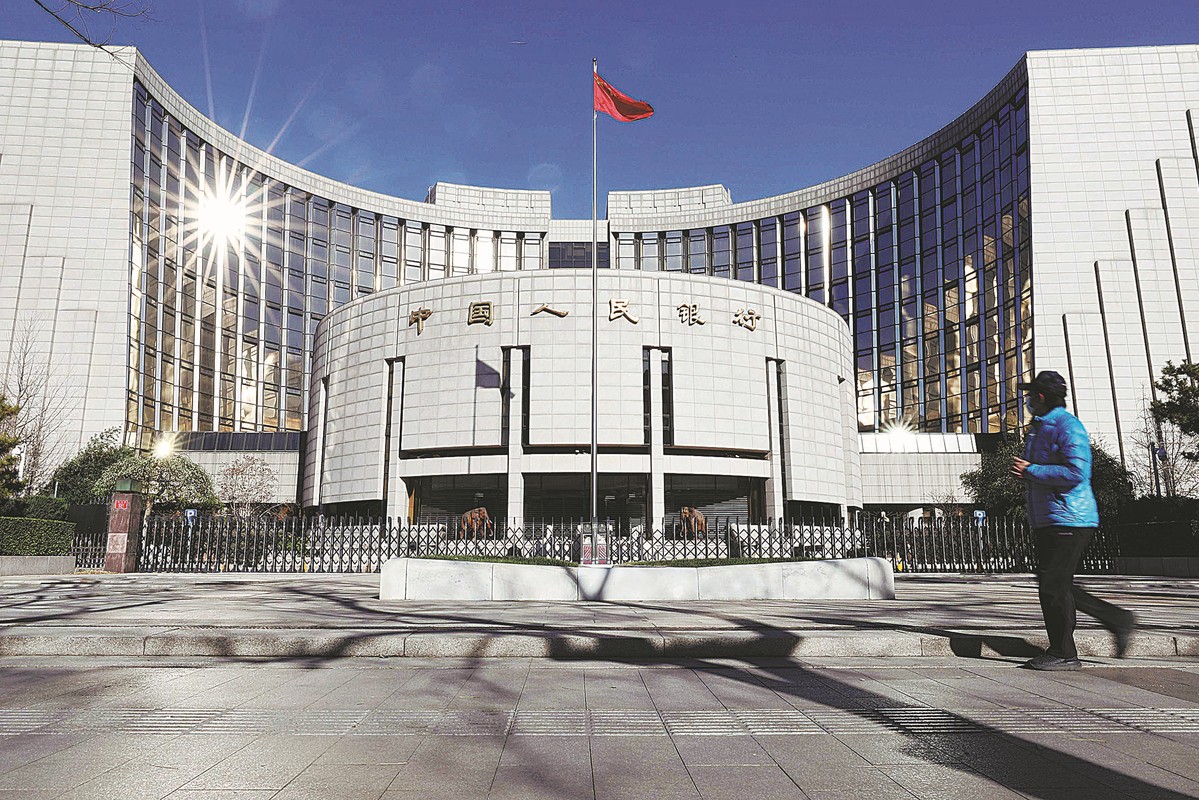PBOC seen to have bigger space for monetary easing
By ZHOU LANXU | CHINA DAILY | Updated: 2022-05-27 07:51

China's central bank may have more room to maneuver toward stable economic growth in the second half of the year as the United States is expected to slow down the pace of its monetary tightening, industry experts said on Thursday.
The experts said it remains possible for the People's Bank of China, the country's central bank, to further reduce interest rates and the reserve requirement ratio-the proportion of funds banks must hold in reserve-over the rest of the year as the spillover effect of tightening by the US Federal Reserve recedes.
While Fed officials are prepared to move ahead with multiple 50-basis points interest rate hikes to tame inflation, they are also attentive to the need of adjusting their policy based on incoming information about the economic outlook, the minutes of their meeting in early May which were released on Wednesday said.
The experts said the Fed may become less aggressive in tightening rates later in the year as US inflation and economic growth slow down. This, in turn, will alleviate the pressure on currency depreciation and capital outflows facing China and leave the country with more space for monetary easing.
"The space for China to reduce interest rates and the reserve requirement ratio may both expand as the Fed's tightening slows and the domestic COVID-19 surge gets better controlled," said Cheng Shi, chief economist at ICBC International.
China reduced the over-five-year loan prime rate, a benchmark of mortgage rates and longer-term loans, by 15 basis points to 4.45 percent on May 20. The country lowered the reserve requirement ratio in April, which released about 530 billion yuan ($78.76 billion) into the market.
Cheng said there remains room for the over-five-year loan prime rate to further decline if existing measures cannot effectively bolster credit demand.
The necessity of further reducing one-year interest rates and the reserve requirement ratio may increase in the second half, considering large-scale tax refunds and the possible issuance of special treasury bonds, he said.
Echoing Cheng's views, Maximilian Wieland, an economist at Vanguard Investment Strategy Group, said that modest monetary easing in China should have a less depreciating effect on the yuan than it has had so far as market expectations over an aggressive Fed tightening fade over the coming months.
Expectations of further monetary or credit easing in China have grown because policymakers had vowed concrete efforts to shore up an economy severely hit by recent waves of COVID-19 cases, the experts said.
Noting that China's economy faces difficulties that are even greater than in 2020 in some respects, Premier Li Keqiang urged on Wednesday the implementation of policies to stabilize the economy.
To help out suffering market players, the central bank published a statement on Thursday that pledges to establish a long-term mechanism to boost the willingness and capability of financial institutions to serve small and micro businesses.
Efforts will be made to improve risk tolerance and mitigation related to loans to small and micro businesses and better incentivize banks to lend to these companies, the central bank said, adding monetary instruments including RRR cuts should be fully leveraged to boost the credit expansion of smaller businesses.
























